Join More Than 50,000+ Subscribers and get latest camera news and rumors
NEW CAMERA VIDEOS ON YOUTUBE
|
By admin, on October 12th, 2014
 The Fujifilm X30 is a clone of X20 camera, since it features same small sensor and image processor as of X20 camera, on the other side we have Sony RX100 M3 camera that features 1 inch large sensor and very small and compact body design… take a look at the core specification below…. The Fujifilm X30 is a clone of X20 camera, since it features same small sensor and image processor as of X20 camera, on the other side we have Sony RX100 M3 camera that features 1 inch large sensor and very small and compact body design… take a look at the core specification below….
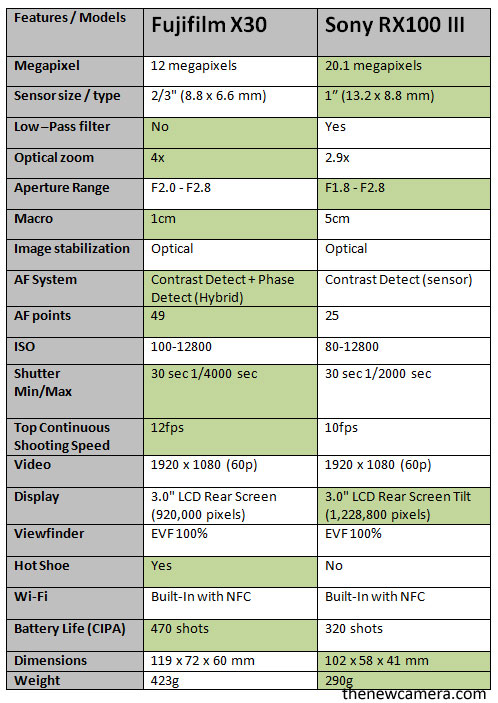 Sensor Tech: The fujifilm features 2/3″ CMOS image sensor and built with X-Trans bespoke pixel array, the pixel pattern literally reduce the need of optical low pass filter above the sensor, the other major advantage of the X-Trans sensor is the presence of active phase AF pixels inside the sensor, so you get HYBRID AF system that uses contrast and phase AF method with the X30 camera to acquire AF. Sensor Tech: The fujifilm features 2/3″ CMOS image sensor and built with X-Trans bespoke pixel array, the pixel pattern literally reduce the need of optical low pass filter above the sensor, the other major advantage of the X-Trans sensor is the presence of active phase AF pixels inside the sensor, so you get HYBRID AF system that uses contrast and phase AF method with the X30 camera to acquire AF.
the Sony RX100 M3 comes with large 20.1 megapixel 1″ Exmor R CMOS sensor features backside-illuminated technology, due to the large sensor size and bright optical lens the sensor get more light compared to Fuji X30 sensor and the difference is clearly visible… the RX100 M3 does produces excellent level of details in the images by maintaining the minimum amount of noise.
Lens: As we have already said that the lens used in the RX100 M3 camera delivers more light compared to the X30 camera not only due to the difference in the aperture range but also due to the difference in the size of lens elements, the RX100 M3 lens elements are designed for large sensor by and they also feature low aperture range… so the RX100M3 will provide more shallow DOF and noise less low-light images when compared to the X30.
Being small the Fuji lens is able to focus as close as 1cm, the Sony RX100 M3 macro range is limited to 5 cm, you also get 1X more optical zoom lens with Fuji X30.
AF System: We have no doubt that the Fuji X30 will do faster AF since it features advance AF sensor that utilizes Phase and Contrast based methods, on the other side we have Sony RX100 M3 uses traditional contrast detect AF system.
Top continuous speed: Fujifilm x30 can take up to 12 continuous shots whereas Sony RX100 III can take up to 10 shots continuously.
Display: Both the cameras support the same 3” tilting LCD but their pixels varies. Sony RX100 III has a pixel density of 1,228,800 pixels whereas Fujifilm x30 has a pixel density of 920000 pixels.
Hot Shoe: Fujifilm x30 has a hot shoe on its body to attach an external flash for better lightning conditions when required.
Battery life: Fujifilm X30 can take 470 shots in one cycle but Sony RX100 III can take 320 shots only.
Dimensions: Sony RX100 III is smaller than Fujifilm X30.
Weight: Sony RX100 III is lighter than Fujifilm X30.
Verdict: We highly recommend you to buy the Sony RX100 M3 camera.
Buy Fuji X30 from – Amazon and B&H || Buy Pre-order RX100 M3 at Amazon | B&H
By admin, on October 3rd, 2014
 – Image size comparison – Panasonic LX100 is bigger than RX100 M3 compact – – Image size comparison – Panasonic LX100 is bigger than RX100 M3 compact –
The Panasonic Rumored large sensor compact camera finally announced and its features M4/3 size sensor, we are comparing the ultra popular RX100 M3 camera with the LX100, take a look who wins…
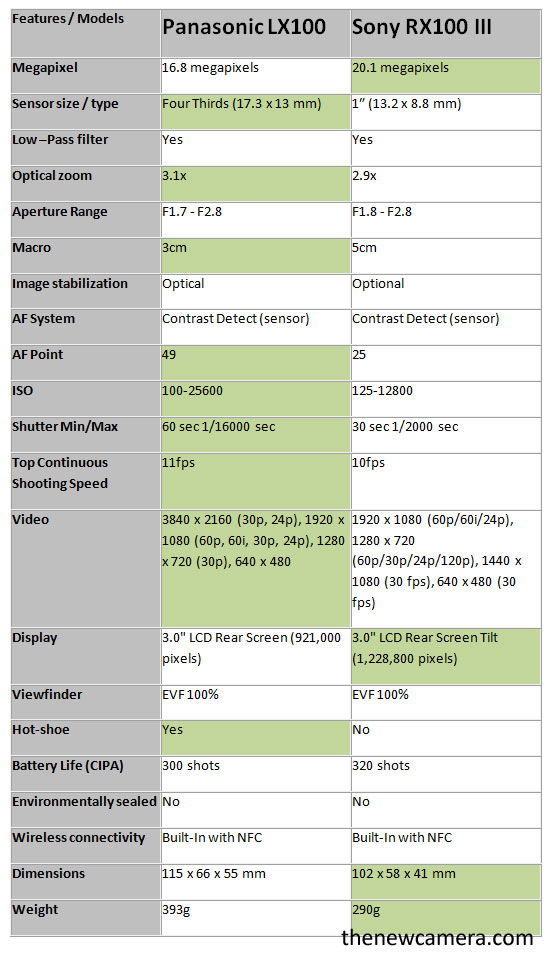 Sensor Sensor
The Panasonic LX100 features large multi-aspect 4/3″ type MOS sensor that produce images of 12.8MP still and records 4K Ultra HD video at 30 and 24 fps on the other hand Sony features a 20.1 MP megapixel 1″ Exmor R CMOS sensor that features backside-illuminated technology to produce better low-light images.
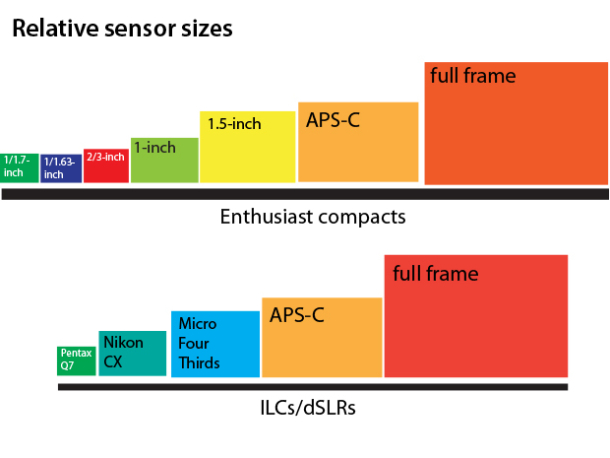 However having a large sensor and big photodiode Panasonic will produce better low-light images with more dynamic range. However having a large sensor and big photodiode Panasonic will produce better low-light images with more dynamic range.
Lens
Due to the introduction of high quality 24-75mm Leica DC Vario-Summilux f/1.7-2.8 Lens the Panasonic features more bit more optical zoom (3.1 vs 2.9) by having the same aperture range as of Sony RX100 M3, The Macro mode available in LX100 is also better, the LX100 allows you to get more closer to your subject (3cm vs 5cm), plus the lens will create more DOF due to large sensor size of LX100.
Hybrid Shutter
The Panasonic LX100 uses Electronic and Mechanical shutter both, the mechanical shutter provides you shutter speed of 60 – 1/4000 second and electronic shutter capable of shooting 1 – 1/16000 second …
4K Video
The LX100 also supports 4K 3840 x 2160 video recording at 30 or 24 fps in MP4 format (No AVCHD), the 4K video can be recorded for up to 15 minutes, and requires an SD card rated at UHS-I Speed Class 3, you can record Full HD videos @ 60fps in MP4 and AVCHD formats.
Verdict:
Based on core specification difference we recommend you to buy Panasonic LX100.
Buy Panasonic LX100 from Amazon || B&H Store
By admin, on June 5th, 2014
A High ISO test recently done by french website Focus Numerique, If you look at the image below you will surely see that Sony RX100 M3 showing more details at 100% compared to large sensor cameras, a quick info about the sensor specification – Sony RX100 M3 features 20.1MP 1″ Exmor R BSI CMOS Sensor, Canon G1X Mark II have newly developed 12.8MP High-Sensitivity 1.5″ CMOS Sensor, Ricoh GR have 16.2MP APS-C Format CMOS Sensor and finally GM1 have 16MP M4/3 format Digital Live MOS Sensor.
Buy Pre-order RX100 M3 at Amazon | B&H
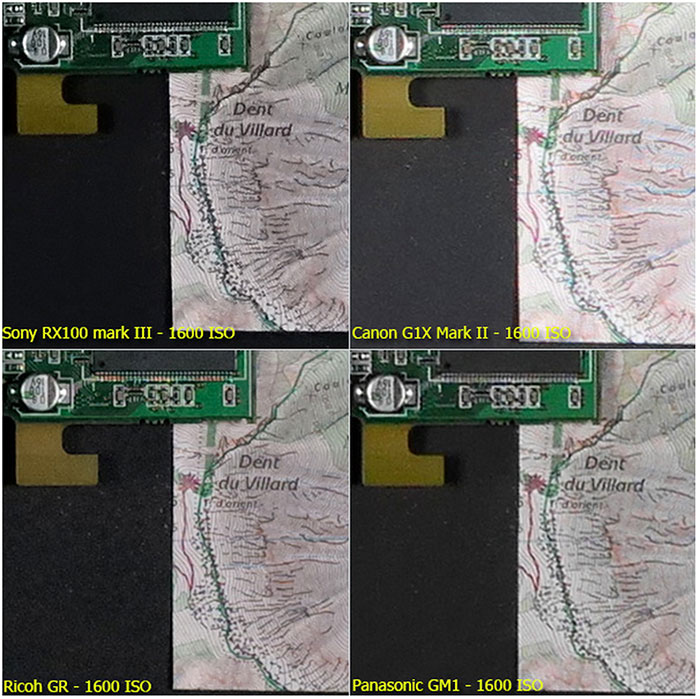
By admin, on June 1st, 2014
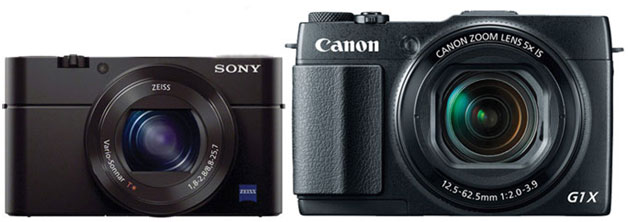
Sony RX100 M3 vs Canon Canon G1X Mark II, the Sony RX100 M3 comes with a 1 inch sensor on the other hand the Canon G1X Mark II have a 1.5 inch sensor, the more sensor area means more light gathering area and hence you get noise free images and more color + contrast at high ISO range compared to the competitor… take a look at the major difference below
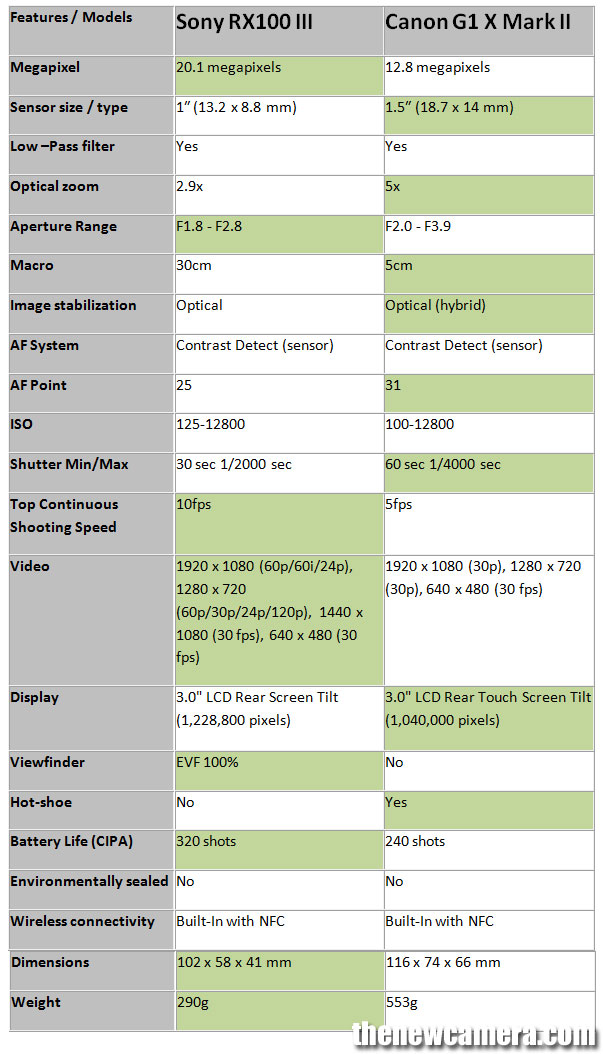
We already discussed the benefit of larger sensor, now lets talk about the lens. The Canon offers more optical zoom lens (2x more) compared to Sony RX100 M3 but Sony offers better aperture range compared to Canon. Bright lenses delivers bit more light to the sensor.
Zoom + Macro mode: Canon offers more zoom lens + better macro mode compared to Sony RX100 M3.
Hybrid Image Stabilization: Both camera features Hybrid Image stabilization modes, Canon G1X Mark II offers IS for wide range of movements >> Panning IS, Macro (Hybrid), Dynamic IS mode (video work) and final Powered IS for tele zoom, we are bit un-confimred but Sony RX100 M3 also features 5 axis based IS system, no more details available.
Advance AF system: Both camera have same type of contrast detect AF system, but the Canon G1X Mark II comes with more AF point hence you get more screen area under AF
Shutter Range: Canon G1X Mark II have bit broad shutter range compared to RX100 M3.
Top Continuous shooting speed: Sony features 2X more continuous shooting speed (10 fps) than Canon G1X Mark II, hence for sports-shooter we recommend RX100 M3 camera.
Video: Sony RX100 M3 shoot Full HD videos 60fps and able to record it at high-quality XAVC S format, which uses a Long GOP (Group of Pictures) structure, MPEG-4 AVC/H.264 video compression is also available., and other major feature is linear PCM audio compression option available in RX100 M3 camera. Canon G1X Mark II records Full HD videos @ 30fps in the Internet-friendly MP4 format.
Display: Canon G1X Mark II have 3.0″ 1,040k-dot capacitive touchscreen LCD display unit, that moves on multiple direction on the other hand RX100 M3 have 3.0″ 1229k-Dot Multi-Angle Xtra Fine LCD.
Viewfinder: Sony RX100 M3 features advance 1440k-Dot OLED Tru-Finder Pop-Up EVF with eye sensor, no viewfinder present in Canon GX Mark II.
Ease of use: Sony RX100 M3 is very pocket-table camera and easily fits in your tight jeans without any problem, the Canon G1X Mark II need a jacket pocket.
Price Factor: Both camera available at approx same price tag – $799 (MSRP), no major difference here.
Connectivity: Both camera features WiFi and NFC connectivity.
Verdict: Yes Canon will give you better image quality due to its larger sensor + you get bit more flexibility due to the more optical zoom lens and better macro mode. But Sony gives you ultra compact design, fast continuous shooting mode and excellent video recording mode with high-quality XAVC S format recording option.
if you are a travel / street photographer and need a ultra slime camera for your pocket than Sony RX100 M3 is a excellent choice.
Buy / Pre-order Canon G1X Mark II from Amazon || B&H || Buy Pre-order RX100 M3 at Amazon | B&H |
By admin, on May 19th, 2014

The RX100M3 is a successor of RX100 M2 camera, take a look below the table to see the major difference…
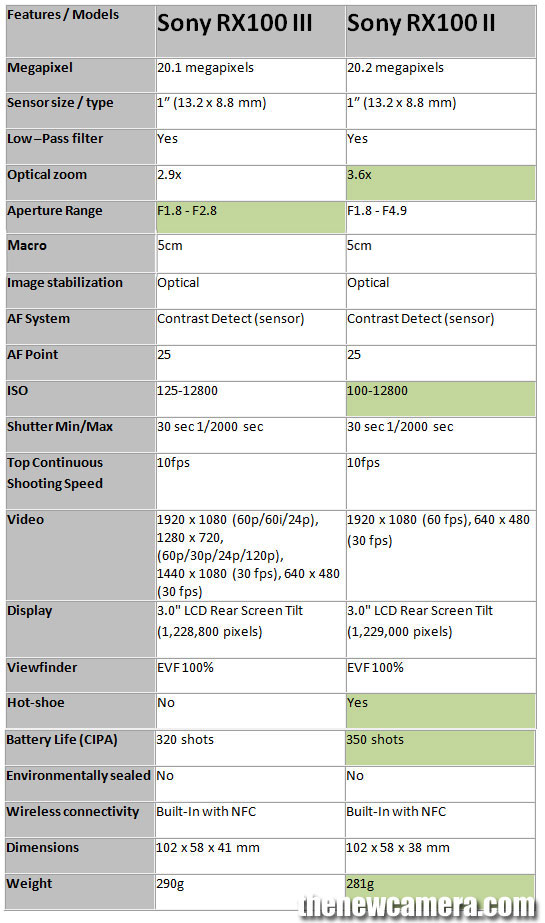
Sensor: Sony RX100M3 uses same sensor of RX100 M2 camera, but the image processor and the lens is new (mentioned below) so we may see some improvement in image quality.
Image processor: The BionzX image processor of RX100 M3 camera is approx three times faster than the Bionz image processor of RX100 M2 camera, the image processor is responsible for decoding RAW files to JPEG, AF speed, shutter lag and fast image processor naturally boost the overall operational speed of the camera.
Lenses: The lens losses some optical reach, Sony RX100 M3 able to do 2.9X optical zoom only and Sony RX100 M2 is able to do 3.6X optical zoom.
Improvement in Lens of RX100 M3 camera:
RX100 M3 comes with a improved aperture range – f/1.8 (W) – 2.8 (T) to f/11 on the other hand RX100 M2 aperture range is limited : f/1.8 (W) – 4.9 (T) to f/11, bright aperture lenses delivers more light to the sensor, hence you get more DOF and less noise in your images compared to RX100 M2.
The RX100 M3 Tele- close up range is much improved, the RX100 M3 Tele close-up AF range is 30cm on the other hand the RX100 M2 camera close-up range is limited to 55cm.
Better Background Blur – Due to close-up tele range the RX100 M3 camera gives very nice / creamy background blur compared to RX100 M2 when portraits are captured at Telephoto end (70 mm).
More wide coverage: The new RX100 M2 lens cover more frame compared to RX100 M2 camera (24-70mm vs 28-100 mm).
Inside the Lens: The Sony RX100 M3 lens is made up of 10 elements in 9 groups (including 9 aspherical elements), the RX100 M2 lens was made up of 7 elements in 6 groups (including 4 aspherical elements), due to the use of more and high quality aspherical elements,
Video: The frame rate remains same but new XAVC S recording format added (same as Sony A7s camera), audio recording format also get a facelift by adding Linear PCM (Pulse-code modulation – 2 channel).
Introduction of OLED pop-up viewfinder: The 0.39″ 1,440k-dot SVGA OLED Tru-Finder EVF added by Sony in RX100 M3 camera, the EVF’s optics feature a Zeiss T* anti-reflective coating to enhance visibility, the viewfinder also features eye sensor to detect your eye position.
The Hot-shoe is removed by Sony, it may bring disappointment to professional photographers since now there is no option left to use external flash or micro-phone.
Verdict: The RX100 M3 does have improved lens, new image processor, pop-up viewfinder and highest level of (XAVC S) video recording format available, but the sensor remains same as RX100 M2 camera, the RX100 M2 users may wait (if you feel these improvements are not enough for you) for Sony RX100 M4 camera but for new users we highly recommend you to buy Sony RX100 M3.
Buy Pre-order RX100 M3 at Amazon | B&H |
By admin, on May 16th, 2014
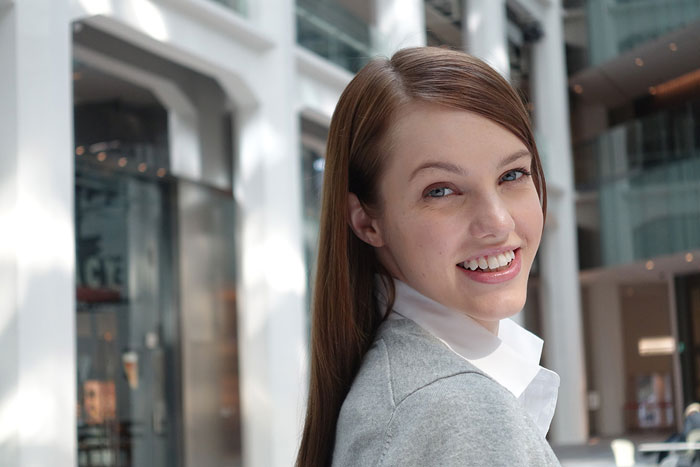
Sony RX100 M3 Sample Images Surfaced over the web today, the low light samples have very less noise and the portrait sample (above) showing excellent background blur / bokeh like a professional DSLR. RX100 M3 is really one of the best ultra compact camera available in the market today…. see the announcement page here – Sony RX100 M3 Price, Press Release, Full Specification and Videos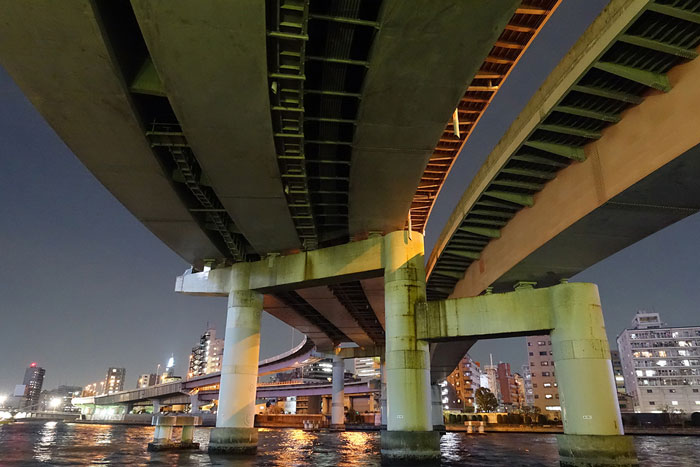
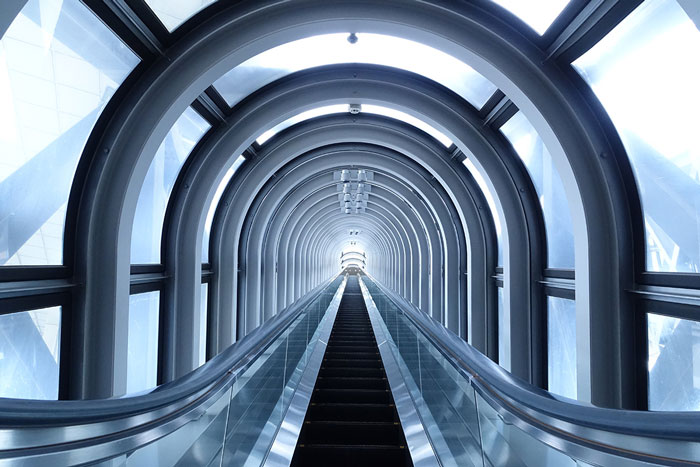
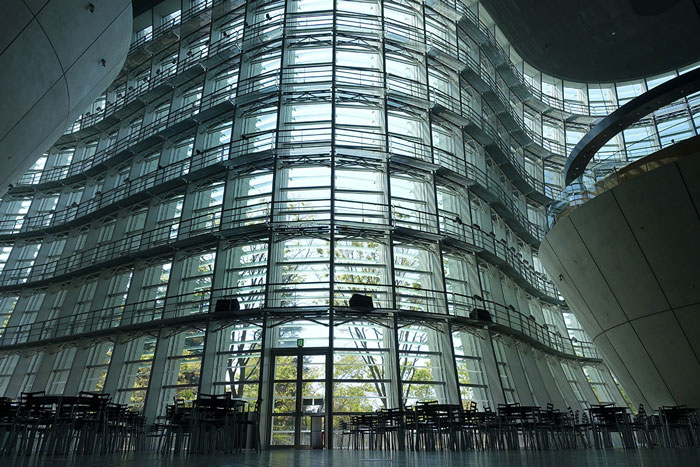
SRC – Sony Global
By admin, on May 16th, 2014
The long rumored Sony RX100 M3 camera finally announced today by Sony, the camera specification is similar to the specification we have published few days ago and even price is also same,
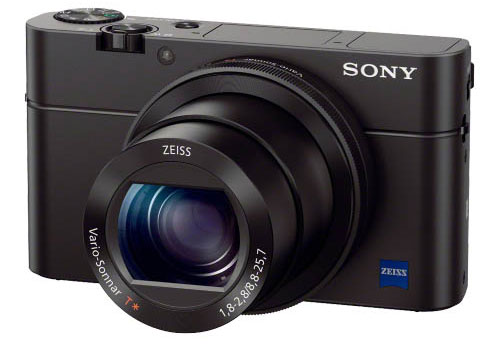
The RX100 M3 camera features same sensor as RX100 M2 camera but the lens is more improved and becomes more wider, this time we have Zeiss Vario-Sonnar T* f/1.8-2.8 Lens, the other major improvement is 3X fast BionzX image processor used in the new RX100 M3 camera.
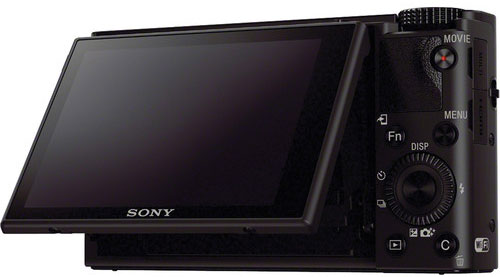
The RX100 M3 camera now comes with a built-in 1.4M-dot OLED pop-up “Tru-Finder.” for professional users, the camera also records Full HD 1920 x 1080 videos and now movies can be recorded in the high-quality XAVC S format, which uses MPEG-4 AVC/H.264 video compression and linear PCM audio compression. You also get WiFi and NFC connectivity with RX100 M3.
MSRP Price – $798.00
Pre-order / Buy at Amazon | B&H |
Press Release
Sony RX100 M3Press Release
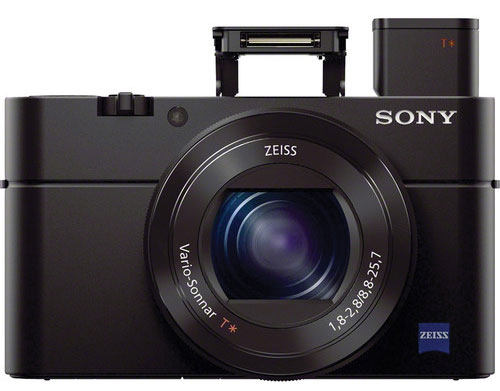
Sony Adds New Pocket-Sized RX100 III Camera to Acclaimed Cyber-shot® RX Line
New RX100 III Model Features Large-Aperture ZEISS® 24-70mm lens1, Built-in OLED Viewfinder with ZEISS T* Coating, BIONZ® X processor and more
SAN DIEGO, May 15, 2014 – Building on its lineup of acclaimed compact cameras, Sony Electronics has introduced a new addition to its popular Cyber-shot RX series – the pocket-sized RX100 III camera.
Based on the same sleek, stylish design as the existing RX100 and RX100 II models, the new RX100 III features a specially developed ZEISS® Vario-Sonnar T* 24-70mm1 F1.8-2.8 lens and adds a built-in OLED viewfinder with ZEISS T* coating. The camera utilizes the same high-resolution 20.1 MP 1.0-type back-illuminated CMOS image sensor as the existing RX100II model, and adds the powerful BIONZ X processor featured in several high-end Sony cameras including the full-frame α7, α7R and α7S models.
“Sony continues to push the modern limits of engineering and innovation with our Cyber-shot RX family of products” said Patrick Huang, director of the Cyber-shot business at Sony Electronics. “With the new RX100 III model, we’ve added a brighter, wider aperture lens and an impressive retractable OLED EVF, while also utilizing the latest Sony imaging technologies to boost the camera’s processing speed and efficiency. And we’ve done this without sacrificing any of the true ‘pocketability’ of our RX100 line, creating an especially unique compact camera unlike anything else in market today.”
New ZEISS® Vario-Sonnar T* 24-70mm1 F1.8-F2.8 Lens
The unique new ZEISS lens on the RX100 III camera covers the popular 24 -70mm1 focal length with a wide F1.8 – F2.8 aperture. This is particularly noteworthy at the 70mm telephoto end of the lens, where the maximum F2.8 aperture allows it to gather about twice as much light as the RX100 and RX100 II models (at 70mm), ensuring that portrait subjects can be captured against beautiful background defocus. The wide aperture also allows the lens to capture moving subjects clearly without any blur due to camera and/or subject shake.
The versatile new lens is capable of capturing dramatic landscapes or large group photos at the wide 24mm length while also boasting impressive macro shooting capabilities throughout the focal range. For example, it can still focus accurately as close as 30cm from the front of the lens (working distance) when fully extended. There’s also a built-in 3-stop (1/8) neutral density filter that adds to shooting flexibility in a wide range of outdoor conditions.
The new ZEISS lens realizes outstanding corner-to-corner sharpness, with nine total aspherical glass elements including two advanced aspherical elements that have been cemented together – a world’s first in lens manufaturing2. This results in an ultra-compact physical footprint while maintaining a wide maximum angle of view. Additionally, the 24-70mm lens1 features ZEISS T* coating that minimizes flare and ghosting and a seven-blade circular aperture that enhances ‘bokeh’ background defocus.
Clear, High-Precision Built-in EVF with ZEISS T* Coating
Largely based off of customer feedback on existing RX100 series cameras (RX100 and RX100II), the new RX100 III adds a versatile, high-quality OLED Tru-Finder™ electronic viewfinder. The EVF has an impressive 1.4 million dot resolution, adding exceptional brightness and clarity to the overall framing and viewing experience, and handily pops in and out of the top of the camera body based on shooting preferences. This allows the camera to operate in the traditional ‘rangefinder’ style without sacrificing any of its portability or compactness.
The unique new EVF also features a specially-designed eyepiece lens with ZEISS T* coating, dramatically reducing reflections that can interfere with clear viewing. The viewfinder achieves exceptional corner-to-corner clarity, and includes an eye sensor that automatically switches between viewfinder and monitor display.
Exmor R CMOS Sensor and BIONZ X Processor
The powerful new RX100 III camera shares the same critically acclaimed 1.0-type back-illuminated 20.1 MP Exmor R CMOS image sensor featured in the RX100 II and RX10 cameras. With approximately four times greater image capture area than the 1/2.3 type image sensors commonly used in compact cameras, the sensor takes in significantly more light, translating into brighter, clearer images and sharper Full HD videos that capture all of the finer details of a scene.
The high-resolution sensor is paired with the evolved BIONZ X image processor introduced in the α7, α7R models this past fall. Around three times faster than the BIONZ processing engine in the RX100 and RX100 II models, it employs detail reproduction, diffraction-reducing and area-specific noise reduction technologies that allow the camera to produce amazingly detailed images and Full HD videos in all types of lighting conditions.
Pro-Quality Full HD Video Capture
The new RX100 III model is equipped with a host of HD video capabilities to satisfy the most demanding enthusiasts.
The new compact is the first Cyber-shot model to offer high-resolution HD video recording in the XAVC S format, which allows for full HD recording at a data rate of 50 mbps with lower compression for improved video quality. Additionally, with the power of the BIONZ X processor, the camera is able to read, process and output data from all of the sensor’s pixels during video recording, ensuring that it produces the highest quality video possible by eliminating aliasing, moiré and false color artifacts.
Other video features include a ‘clear’ HDMI® output for reviewing footage on an external monitor, 120 fps recording at 720p HD resolution and zebra pattering on the LCD and built-in EVF. The camera also has dual video recording capability (XAVC S / AVCHD files4 along with MP4 files), which allows users to shoot a high bit-rate video for storage or editing purposes while also recording a lower bit rate video that’s optimized for sharing via Wi-Fi®.
The camera also has Intelligent Active Mode – another first for Cyber-shot RX series cameras – which utilizes Sony’s frame analysis technology and 5-axis compensation to dramatically reduce the effects of camera shake while shooting movies.
Camera Design, Customizability and Control
Despite its small “pocketable” size, the new RX100 III features many opportunities to adjust common shooting settings, including a ‘Fn’ key, customizable control ring and a “C” custom button with more than 40 assignable functions.
New to the RX series, the RX100 III model features an articulated LCD that can tilt upward by about 180 degrees for self-portraits and all the way downward to approximately 45 degrees for high-angle shots. The camera also can output still images in 4K resolution6 with full wide-gamut TRILUMINOUS Color support when connected to compatible 4K televisions.
Wi-Fi® and PlayMemories™
The RX100 III camera has built-in Wi-Fi, giving consumers one-touch connection with Xperia® or NFC-compatible Android™ smartphones or tablets for instant image transfer and sharing. A single touch also activates Smart Remote Control, linking the camera with a smartphone or tablet for a live image preview, to fire the shutter from a distance and to review shots instantly.
For devices without NFC one-touch capabilities, users can wirelessly transfer images and videos and activate Smart Remote Control through Sony’s free PlayMemories Mobile™ application, available for the iOS and Android platforms.
The camera is also the first Cyber-shot RX series model to feature compatibility with Sony’s growing assortment of downloadable Sony PlayMemories Camera Apps5, adding a range of exciting and creative capabilities. Learn more at www.sony.net/pmca .
Pricing and Availability
The Cyber-shot RX100 III compact camera will be available in June for about $800. The camera and a range of compatible Cyber-shot accessories will be sold at all Sony retail stores (www.store.sony.com) and other authorized dealers nationwide.
1 35mm full-frame format equivalent
2 As of the official May 16, 2014 release date. Based on Sony survey of of glass aspherical elements used on digital cameras.
3 An SDXC memory card with a Class 10 or higher speed rating is required for XAVC S recording.
4 Dual Video Recording is not available when the Intelligent Active Mode is ON, or when XAVC S 120p/60p/50p or AVCHD 60p/50p is selected.
5 The latest version of the PlayMemories Mobile application must be downloaded and installed on your smartphone or tablet computer.
6 QFHD (3840 x 2160)
|
KEEP THIS BLOG ALIVE - Support New Camera Buy Canon Lenses, Buy Music CD or Digital Camera at amazon it helps this site, and you do not pay anything extra, it is just a way to help support this site.

|
 The Fujifilm X30 is a clone of X20 camera, since it features same small sensor and image processor as of X20 camera, on the other side we have Sony RX100 M3 camera that features 1 inch large sensor and very small and compact body design… take a look at the core specification below….
The Fujifilm X30 is a clone of X20 camera, since it features same small sensor and image processor as of X20 camera, on the other side we have Sony RX100 M3 camera that features 1 inch large sensor and very small and compact body design… take a look at the core specification below…. Sensor Tech: The fujifilm features 2/3″ CMOS image sensor and built with X-Trans bespoke pixel array, the pixel pattern literally reduce the need of optical low pass filter above the sensor, the other major advantage of the X-Trans sensor is the presence of active phase AF pixels inside the sensor, so you get HYBRID AF system that uses contrast and phase AF method with the X30 camera to acquire AF.
Sensor Tech: The fujifilm features 2/3″ CMOS image sensor and built with X-Trans bespoke pixel array, the pixel pattern literally reduce the need of optical low pass filter above the sensor, the other major advantage of the X-Trans sensor is the presence of active phase AF pixels inside the sensor, so you get HYBRID AF system that uses contrast and phase AF method with the X30 camera to acquire AF.



















